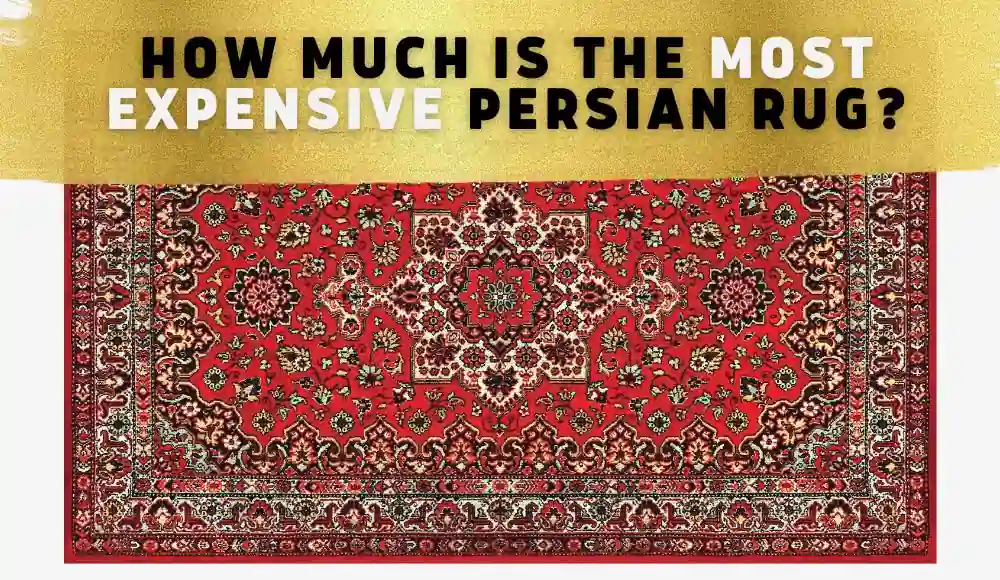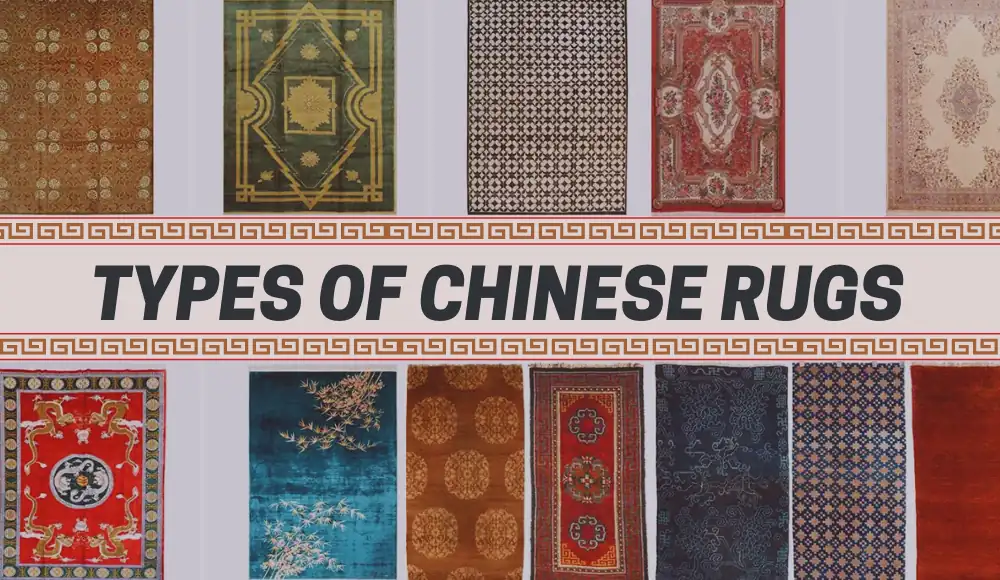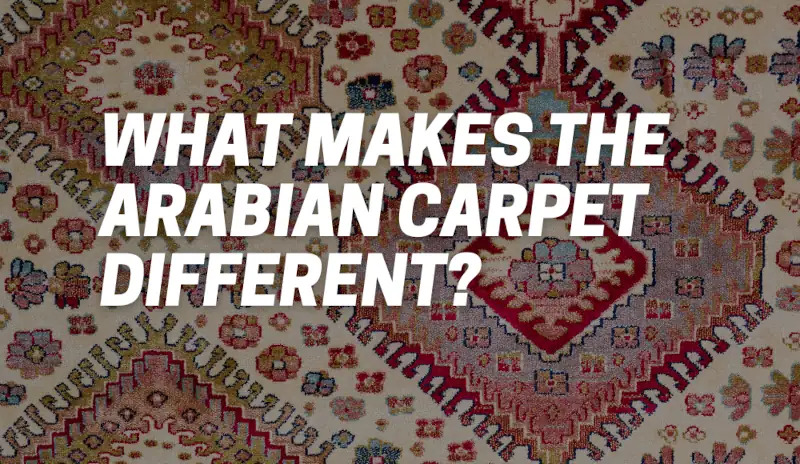Last updated on May 8th, 2023 at 05:34 am
Persian rugs are renowned for their intricate designs, exquisite craftsmanship, and rich history. These luxurious floor coverings have been sought after by collectors, royalty, and elite buyers for centuries. In this blog post, we’ll delve into the world of Persian rugs and explore their value, history, and features that make them some of the most expensive rugs.
Which Persian rugs are the most expensive?
When it comes to Persian rugs, the value is determined by a variety of factors, including age, size, rarity, quality of materials, and intricacy of the design.
Among the most expensive Persian rugs are silk rugs, which are known for their softness, sheen, and durability. Silk Persian rugs are made of pure silk and are incredibly labor-intensive, requiring hundreds of hours of work to create just one rug. These rare and expensive rugs are prized for their intricate designs and soft texture, and they often fetch millions of dollars at auction.
Here is how expensive silk carpets (with a price range of $5000-$13 000) look like:
How Much is the Most Expensive Persian Rug?
We have already shared the data about the Top 10 most expensive rugs and carpets ever sold where you can also find the most expensive Persian rug.
What was the most expensive Persian rug sold at auction in June 2013 for $33.8 million? The most expensive Persian rug ever sold at auction was a silk Isfahan Clark Sickle-Leaf rug from the 17th century made of wool, silk, and cotton. The rug was sold for a staggering $33.8 million at a Christie’s auction in June 2013.
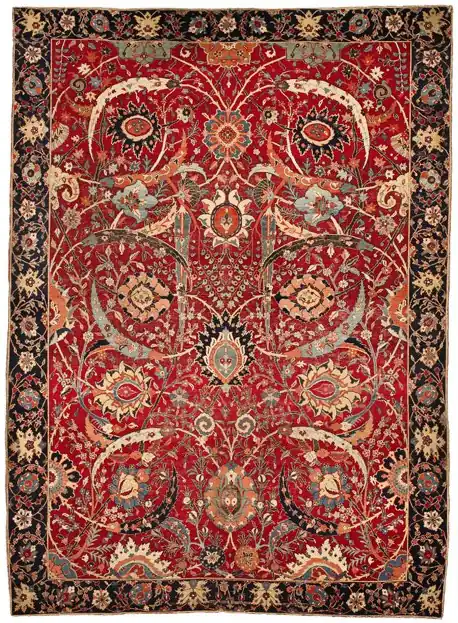
This rug is considered one of the most important and rarest Persian rugs in existence, thanks to its intricate design and historical significance. The rug was originally created for the royal court of Persia and was passed down through generations of royal families before eventually ending up in the hands of a private collector.
Are there any specific features that collectors look for when purchasing an expensive Persian rug?
When it comes to collecting Persian rugs, collectors look for a variety of features that contribute to the value of the rug. These features include the age, size, rarity, quality of materials, and intricacy of the design.
Collectors also look for rugs with a unique story or history, such as those that were once owned by royalty or were created for a special occasion.
How do the prices of Persian rugs compare to other types of luxury items, such as art or jewelry?
When it comes to luxury items, Persian rugs are often compared to art and jewelry in terms of their value and prestige.
While the prices of Persian rugs can vary widely depending on the age, rarity, and quality of the rug, they are often sold for millions of dollars at auction. In comparison, high-end art and jewelry can also fetch millions of dollars, with some pieces selling for tens or even hundreds of millions of dollars.
Who are some of the most famous collectors of Persian rugs, and what are some of the rugs they own?
Over the years, many famous collectors have amassed impressive collections of Persian rugs.
Among these collectors are wealthy individuals, royal families, and even museums. Some of the most famous collectors of Persian rugs include the late David Rockefeller, who had a vast collection of rugs from around the world, and the Metropolitan Museum of Art in New York, which houses an impressive collection of Persian rugs from various periods and regions.
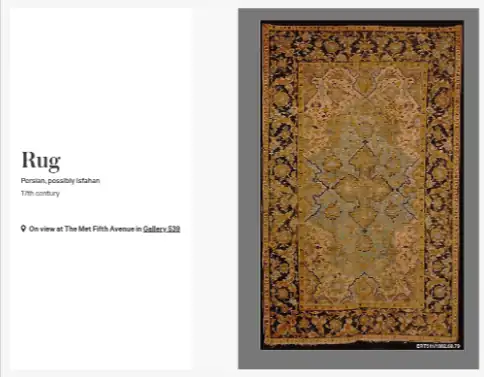
Are there any unique stories or histories associated with particularly expensive Persian rugs, such as rugs once owned by royalty?
Yes, many Persian rugs have unique stories or histories that contribute to their value and prestige. For example, the aforementioned Isfahan rug that sold for $33.8 million at auction was originally created for the royal court of Persia and was passed down through generations of royal families.
How do experts authenticate the origin and value of Persian rugs, especially when dealing with older or antique pieces?
Authenticating the origin and value of Persian rugs can be a complex process, especially when dealing with older or antique pieces.
Experts in the field of Persian rugs must have a deep understanding of the history, culture, and craftsmanship behind each piece.
One important factor that experts consider when authenticating a Persian rug is its design. Persian rugs are known for their intricate designs and patterns, which can be used to identify the region and time period in which the rug was created.
For example, rugs from the city of Tabriz often feature floral motifs and intricate borders, while those from the city of Kerman may have more geometric designs.
Another factor that experts consider when authenticating Persian rugs is the materials used in their construction. Authentic Persian rugs are made from natural materials such as wool, silk, and cotton, and are often dyed using natural dyes made from plants and insects. The quality of the materials and the dyeing process can affect the value of the rug, as well as its durability and longevity.
Experts may also look for certain hallmarks or signatures on a Persian rug to authenticate its origin and value. For example, some rugs may have a signature or inscription woven into the design, indicating the name of the weaver or workshop that created the piece.
Other rugs may have a seal or stamp on the back that indicates the origin or quality of the rug.
When dealing with older or antique Persian rugs, experts may use scientific methods such as carbon dating and microscopic analysis to determine the age and authenticity of the piece. They may also compare the rug to historical records and other examples of rugs from the same region and time period.
Overall, authenticating the origin and value of Persian rugs requires a combination of knowledge, experience, and careful analysis. It is important for buyers to work with reputable dealers and experts in the field to ensure that they are getting an accurate assessment of the rug’s authenticity and value.
Are there any current trends or changes in the Persian rug market that could affect the prices of these rugs in the future?
The Persian rug market has experienced significant changes and fluctuations in recent years, driven by factors such as political instability, economic conditions, and changing tastes among collectors and buyers.
One trend that has emerged in the Persian rug market in recent years is a growing interest in vintage and antique pieces.
Many buyers are drawn to the history and craftsmanship of older rugs, which may have unique designs and features that are not found in newer pieces. As a result, prices for vintage and antique Persian rugs have risen significantly in some cases, making them increasingly valuable as investments.
Another trend in the Persian rug market is the growing influence of online sales and e-commerce platforms. Many buyers are now purchasing Persian rugs through online retailers, which offer a wider selection and more competitive prices than traditional brick-and-mortar stores.
However, this shift to online sales has also led to an increase in counterfeit and fraudulent rugs, making it important for buyers to do their research and work with reputable sellers.
Finally, political instability and economic conditions in Iran, the birthplace of Persian rugs, have also affected the market in recent years. Sanctions and trade restrictions have made it more difficult for Iranian rug makers to export their products, which has led to a decline in the quality and availability of Persian rugs in some cases.
However, this has also led to a renewed focus on the craftsmanship and artistry of Persian rugs, as buyers seek out unique and rare pieces that are difficult to find.
In conclusion, the Persian rug market is constantly evolving, driven by changing tastes and trends among buyers, as well as political and economic conditions. The enduring appeal of these beautiful and unique pieces ensures that they will remain a valuable and sought-after investment for collectors and buyers around the world.
How can someone who is interested in purchasing a Persian rug ensure that they are getting good value for their money?
If you’re interested in purchasing a Persian rug, it’s important to make sure you’re getting good value for your money.
Here are a few tips to help you make a smart purchase:
- Educate yourself on Persian rug styles and designs: Before buying a Persian rug, you should learn about different styles and designs. Familiarize yourself with the knots, patterns, and colors that are characteristic of Persian rugs. This knowledge can help you identify the origin and age of the rug.
- Determine the quality of the rug: The quality of a Persian rug is determined by various factors, such as the number of knots per square inch, the quality of the wool or silk used, and the dyeing process. A higher knot count and better quality materials usually indicate a more expensive rug.
- Look for signs of authenticity: To ensure you’re getting a genuine Persian rug, look for signs of authenticity, such as the country of origin, the weaver’s signature, and the rug’s age. It’s also essential to check the rug’s material and weave. An authentic Persian rug is usually made of wool or silk and hand-knotted, while machine-made rugs are less valuable.
Research the seller: It’s crucial to research the seller before buying a Persian rug. Check their reputation, reviews, and credentials. Buying from a reputable seller can help ensure that you’re getting a quality rug.
Where can I buy high-value Persian rugs?
You can purchase high-value Persian rugs from various places, such as auction houses, specialty rug dealers, and online marketplaces.
Here are some options to consider:
- Auction houses: Auction houses are a great place to find high-value Persian rugs. They often sell antique and rare rugs that are difficult to find elsewhere. However, be prepared to pay a premium price for these items.
- Specialty rug dealers: Specialty rug dealers often have a wide selection of Persian rugs. They can offer expertise and advice on the quality and value of the rug, as well as provide guarantees of authenticity.
- Online marketplaces: Online marketplaces such as eBay and Amazon have a vast selection of Persian rugs at various price points. However, it’s important to be cautious when buying online and ensure that the seller has a good reputation and offers a return policy.
Antique Persian rugs on Amazon for $50 000-$150 000:
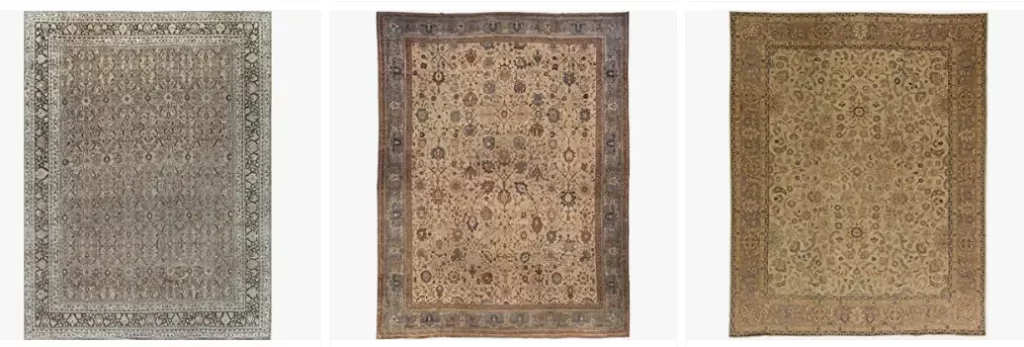
Purchasing a Persian rug can be a worthwhile investment, but it’s important to take the time to research and consider all factors before making a purchase.
By following these tips, you can ensure that you’re getting good value for your money and a beautiful, high-quality rug to enjoy for years to come.
Overall, buying a Persian rug is an investment, so it’s crucial to do your research, educate yourself, and buy from a reputable seller to ensure you’re getting good value for your money.
FAQs about the Persian Rugs
What country makes the best Persian rugs?
Iran is widely regarded as the country that produces the best Persian rugs. This is due to the fact that Iran has a rich history of rug making and has been producing high-quality Persian rugs for centuries.
Additionally, the traditional methods of weaving and dyeing used in Iran are considered to be some of the best in the world.
Can Persian rugs be cleaned?
Yes, Persian rugs can be cleaned. However, it is important to take proper care when cleaning a Persian rug to avoid damaging delicate fibers.
It is recommended to have a professional cleaner handle the cleaning of your Persian rug to ensure that it is done safely and effectively.
